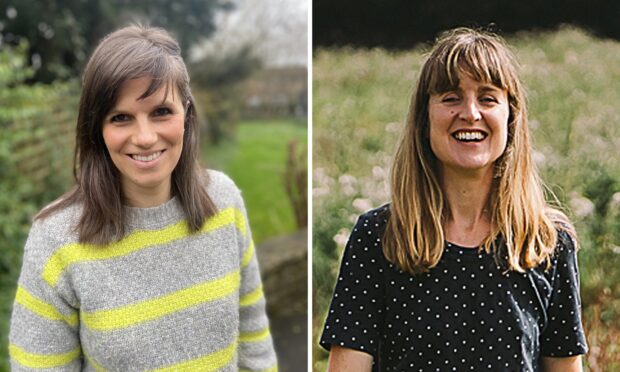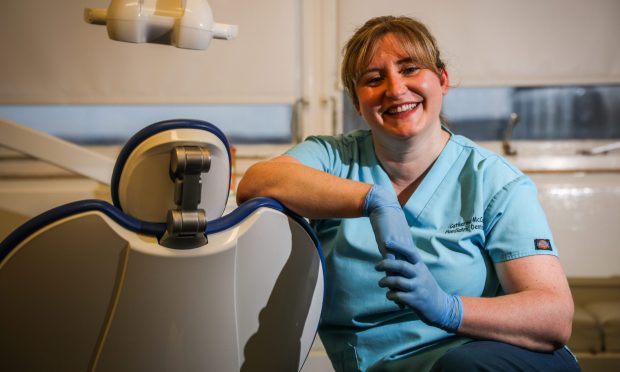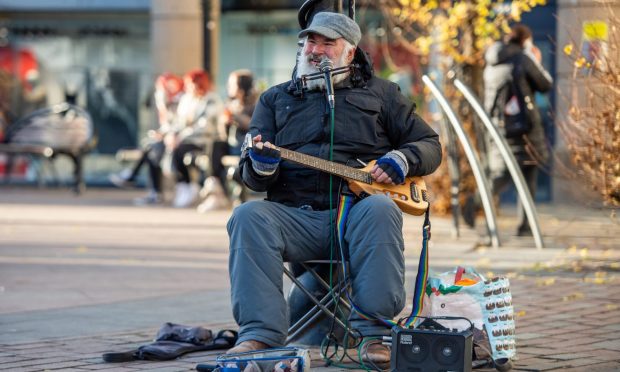A UK-wide movement to protect young people from the harms linked with smartphone use has connected with parents in Dundee and Fife.
Friends Clare Fernyhough and Daisy Greenwell started the Smartphone Free Childhood group in February.
They want to connect parents in local communities so – working together – they can agree not to give their children smartphones until at least the age of 14.
They believe children shouldn’t access social media until the age of 16.
We spoke to local parents who are trying to put the campaign into practice in their communities.
Children with smartphones are ‘guinea pigs’ in an ‘awful experiment’
Fife dad Hugh Sinclair said: “I have two girls aged 10 and 13. They are the only children without smartphones.
“Although we were worried that she would be made fun of for not owning a phone, that hasn’t happened as much as we had anticipated.
“Kids are able to use smartphones in the classroom, which is apparently tolerated.”
Hugh thinks it isn’t about owning a phone – it is about accessing social media.
He fears that there is no control over the content children can access.
Even when performing searches for work, as an adult, he says he is often presented with things that are not suitable for him, let alone a child.
“We are the first generation of guinea pigs in this awful experiment,” he added.
What harms have been linked to smartphones?
Smartphone Free Childhood co-founder Daisy Greenwell explained how the campaign began: “I’ve got a daughter who is eight and I suddenly realised that people in her class were about to start getting smartphones.
“I’ve read how bad they are for kids, and I really didn’t want her to get one, so I set up this WhatsApp group with my friend Clare so we could support each other.
“And it just went viral, and thousands and thousands of people joined.
“People then started to make them in their own regions and now they have just sprung up all around the country.”
The pair encouraged others to create local groups to cope with the demand, with thousands of parents across the UK now involved.
They argue smartphones expose children to harmful content, raise the likelihood of developing a mental illness and are highly addictive.
But, they say, parents have been put in an impossible position as children risk being ostracised by their peer group – or at best missing out on social opportunities – if they do not own one.
Some local schools have taken a strong position against smartphone use.
Kilgraston School in Perthshire became the first in Scotland to outlaw phones in classrooms.
Head teacher Tanya Davie said at the time the “no mobile phone policy in school-time” had brought back the “benefits of good old-fashioned human interaction”.
But some parents want to go further, forming the WhatsApp group chats in an attempt to support each other to prevent – or at least delay – ubiquitous smart phone use among their children.
Dundee parents back Smartphone Free Childhood idea
Some of the parents we spoke to wished to remain anonymous.
They are worried their children will be targeted for their parents’ efforts to prevent whole social groups of children and young teenagers from being given smartphones.
One Dundee parent told us: “I think that if your child isn’t old enough to be out unaccompanied, they do not need a mobile phone.
“A seismic shift is needed – we need to be brave enough to change how and when we allow our kids access to screens, mobiles and the Internet.
“We need to be talking about this more, changing the norm and supporting each other to break the cycle for the sake of our kids”.
Another Dundee mum added: “I have two children, seven and five, and I think smartphones are a problem for kids everywhere, not just in Dundee and Angus.
“I don’t know specifics but there is evidence to support that smartphones/social media are harmful to mental health and body image for both adults and kids.
“I understand that parents feel better knowing their child can contact them at any time, but you don’t need a smartphone for that.
“For me, I think smartphones are the issue because they’re the gateway to social media and that’s where many of today’s problems seem to begin.”
‘A tricky hurdle for parents’
There is currently no legal restriction or official guidance on how old children should be to have a phone, so it’s up to parents to decide whether their child is ready.
The UK boss of Samsung Mobile James Kitto made headlines in February last year when he said he did not give his daughter a smartphone until she was 11.
More than a quarter of five to seven-year olds have their own mobile phone, according to Ofcom research. That grows to 97% of 12 to 15-year-olds.
Smartphone Free Childhood co-founder Daisy says she started a WhatsApp group hoping it would help other parents who felt the same.
“Packing together is where the power is,” she said.
If a small portion of your class decides not to purchase smartphones, it will lessen the pressure from peers to do the same.
“It is a dangerous device that exposes kids to a huge range of dangers and delegates the upbringing of kids to Google and Facebook and Snapchat.”
Daisy said that the ‘SFC’ movement has come to the attention of celebrity supporters too, with royal Sophie Winkleman and radio host Lliana Bird getting on board.
“They both have kids and really feel it’s not the right thing to give them smartphones,” explained Daisy.
Daisy wants to lobby the government and get them ultimately to change the regulations and laws around smartphones.
How has the smartphone industry responded?
Trade body Mobile UK is “the voice” of the UK’s mobile network operators.
The group tackles the issue of protecting children in a statement on its website.
It reads: “Mobile operators offer Internet filters to protect customers under the age of 18 from age inappropriate content.
“The mobile operator sets its filter in accordance with a framework prepared by the British Board of Film Classification (“BBFC”).
“If you are passing an old mobile device to a child, remember to check that the content filter is in place.
“The mobile operators, in partnership with the banking industry, provide resource for schools that teach children how to protect themselves from bullying, identity theft and how to behave responsibly when first acquiring a mobile.”













Conversation